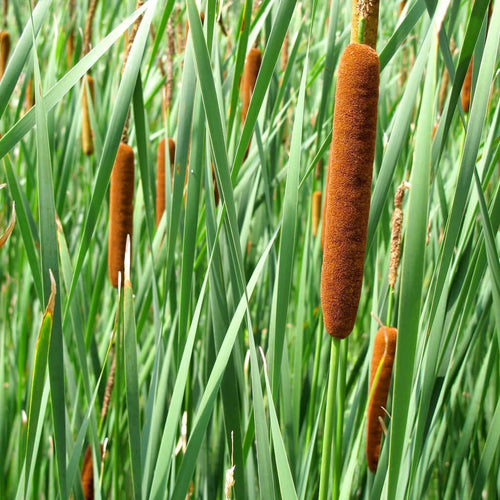Wildlife Attractant Plants
The duck potatoes or Sagittaria latifolia and the cattail or Typha are both wetlands plants naturally occurring in wetlands, states Tammy Sons of TN Nursery, a leading supplier of wetland in the US. Duck Potatoes are found in North America, including Hawaii, the Caribbean, Europe, Australia, and South America. Cattails are found in most areas of North America. Both plants naturalize along the edges of ponds, lakes and rivers, bogs and swamps. Cattails can survive as the water deepens, and they become partially submerged and are often found in ditches along roadsides.
Cat Tail Plants are considered an invasive species in many areas because they often choke out other plants. That is because they spread by wind-dispersed seeds and possess rhizomes that allow their colonies to form and spread underground. The seeds of the cattail form part of the diet of the muskrat and the stalks are often found as part of the dens and platforms they build. Birds use the hairs from the seeds to line their nests.
Duck Potatoes are also considered invasive in many areas. However, they provide a varied diet for wildlife. The tubers are very similar to the common potato and can be cooked and eaten in the same ways by humans. The taste resembles that of standard potatoes or chestnuts. The plant also produces late summer buds and fruits, which can also be eaten. Ducks eat the seeds, while beavers, porcupines, and muskrats often eat the entire plant, including the tubers.
The Duck Potatoes grows to 3 feet or more in height and produces whorls of flowers on its stalk, with both male and female blooms sharing the same stem. Male flowers are easily identified due to the yellow stamens which can be seen. These large white flowers have rounded petals and appear in groups of 3. The large green leaves are shaped like arrowheads, accounting for another plant’s common nickname, the broadleaf arrowhead.
These species are ideal choices when planning backyard habitats featuring ponds where the desire is to attract wildlife. They both offer two advantages to this setting: their attractive appearances and their use as an animal food source.
The cattail and the duck potato require constant monitoring and regulation in a backyard and must regularly be thinned to prevent invasive behaviors. These plants are desirable species, and the stalks and seed heads of cattails are often dried and used in beautiful dried flower arrangements.
Look for Wildlife Attractant Plants at TN Nursery
https://www.tnnursery.net



















































